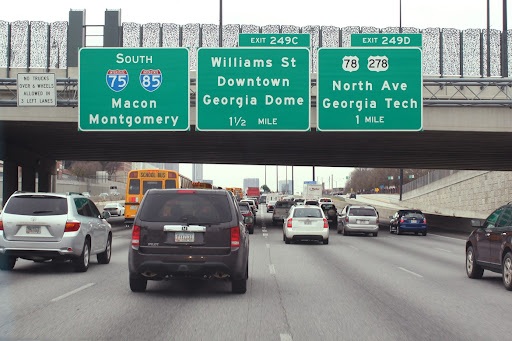Traffics signs are signs that are erected on the side or above the road and they provide guidance and instructions about the path we are driving on. These signs have been around for quite some time and we usually take them for granted, but, as soon as we enter unfamiliar grounds, they become our best friends.
The first traces of erected signs lead back to Ancient Rome. One of the first roads adorned with signs was Via Appia or the Appian Way. The signs were made of stone and they marked who was in charge of maintaining a certain part of the road. Later on, the Romans would place signs at intersections that stated how much more ground you need to cover to reach the Roman capital – Rome.
Nowadays, traffics signs are no longer made of stone. Traffic signs’ role grew as time passed and the materials used to make them have changed over time. If you are interested in the modern-day process of making traffic signs and the materials used during this process, read on as we are going to uncover many facts about these road safeguards.
The Frame
In recent times, road engineers have been focusing on the durability aspect of traffic signs and that’s why stone is no longer their go-to material. Different manufacturers use different frames depending on the sign. The most popular material used for the creation of frames is aluminum. Other materials also include plywood coated with plastic and steel.
Aluminum is the most expensive but also the most durable option. The only drawback to using aluminum is that every sign needs to be reinforced with metal braces on the back because the material is lightweight. On the other hand, plywood is the least expensive traffic sign material, that’s why it’s the least durable and susceptible to weather damage.
The Background Sheeting
If you ever wondered what makes signs reflect that well when you are driving and it’s pitch black, we got that covered as well. The sign copy – the letters, symbols and background sheeting are all cut from retroreflective sheeting. This retroreflective sheeting is made of micro prisms embedded in a flexible plastic surface. The retroreflective sheet works by reflecting the light from the vehicles’ leadlights to the drivers so that the sign is always visible, even at night.
In modern times, to create the perfect highway or roadway sign, every single professional street sign maker uses cutting-edge CAD tools. This enables them to pick the right panel, add intelligent letter formatting, and have proper sizing and editing flexibility. Custom orders are also simplified due to the software features. With the proper tools, traffic engineers can keep the process consistent and less time-consuming due to the plethora of options provided by modern software.
Traffics signs should always adhere to standards set by the Manual on Uniform Traffic Control Devices (MUTCD).

The Manufacturing Process
The manufacturing process of road signs involves quite a few steps such as:
-
- Cutting the blank: The blank is cut from aluminum and the corners are rounded on a punching machine. After that, holes for mounting the signs are drilled.
- Checking the blank: The blanks must then be inspected for contamination or defect. This is done through the application of transparent cellophane tape which is later snapped up. If a color is present that signifies contamination.
- Degreasing the blank: This process involves immersion of the blank in a bath of trichloroethylene.
- Applying the retroreflective sheet to the blank: The adhesive liner on the back of the sheeting is removed and the sheeting is applied to the sign blank. Air bubbles are eliminated with the squeeze roll applicator and then the edges of the sheeting are trimmed.
The Future of Traffic Signs
As technology advances so will the visibility of traffic signs. Some states are already using light-emitting diodes (LED) due to their ability to enhance signs’ visibility at intersections. We probably should not be expecting some drastic change in the field of traffics signs but rather conventional refinements and improvements upon an already functioning system.
Final Thoughts
Traffic signs have come a long way in regards to their manufacturing. Gone are the days when they were made of stone and carved wood. Be sure to check out the MUTCD if you are interested in further expanding your knowledge in road signs and how they are made.




























